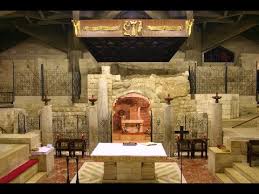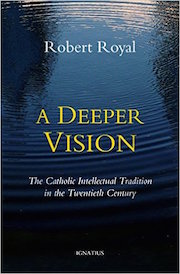I’ve been reading Romano Guardini’s wonderful little book Learning the Virtues that Lead You to God with some of my students. I can’t recommend it highly enough. There is boundless wisdom to be found on every page. Allow me to mention just one example concerning the virtue of “reverence.”
Reverence, says Fr. Guardini, is “a surmise of greatness and holiness and a desire to participate in it, combined with the apprehension of being unworthy of it.” In reverence, “man refrains from doing what he usually likes to do, which is to take possession of and use something for his own purposes. Instead he steps back and keeps his distance. This creates a spiritual space in which that which deserves reverence can stand erect, detached, and free, in all its splendor.”
As you might have guessed, Fr. Guardini is referring here primarily to the reverence due the holy, but reverence also has “an everyday form,” he insists: respect. “Respect is the most elementary thing that must be perceptible if people are to associate with each other as human beings.” It must be shown irrespective of particular talents or accomplishments, but simply because the other person is a human being.
How is respect shown? Respect “means that one take another’s convictions seriously. I may fight against it, for if I am of the opinion that what he says in wrong, then I have right and, under certain circumstances, a duty to defend the truth as I see it.” But we must do this with respect, “conscious of the fact that I am dealing not with an abstract sentence in some book, but with a person” who, “if I see that he is mistaken, I may contend with him.” But I may not violate his conscience or wish to trick him by cunning.
Is ours a society that shows this sort of respect for the convictions of others?
So too, insists Fr. Guardini, there should be “respect for privacy.” Instead, “everywhere we see the urge toward publicity: a mania to see just that which is reserved; a greed for sensation which finds an odious pleasure in unveiling, stripping, causing shame and confusion.” What sort of respect is shown, for example, by those who do not grant privacy to a wife weeping over the death of a husband or child, and insist instead on posting photographs of what should be a private moment for the entire world to see and indulge its salacious appetites?
Ultimately, however, claims Fr. Guardini, “all reverence culminates in reverence for the holy. We feel it when we enter a church.”
At this point we realize how thoroughly Guardini, who died in 1968, represents not only a different generation, but also a clearer insight into the order of things. “Churches are built in such lofty and impressive style,” he insists, “that, even as we enter, the space affects us. If this does not happen, then it is not, in essence a church that we see, but merely an assembly hall.”

What can we say to this, but yes? This is precisely what we see, over and over again: assembly halls, not churches.
Much of the blame for this de-sacralization of church buildings can be attributed to the unhappy influence of the 1978 book Environment and Art in Catholic Worship and its ideological predecessor, Edward Sövik’s Architecture in Worship, a book that called for “The Return to the Non-Church”: an assembly hall that could be used for all purposes. EACW was notable for its repeated emphasis on “the action of the assembly” and the church building merely as a “skin” around them. Most of the document’s prescriptions flowed from what was supposed to serve the assembly’s feelings, experiences, and needs.
But did the changes prescribed really serve those needs? Hasn’t the loss of reverence for the holy brought with it a loss of respect for the human? Has turning our churches into assembly halls brought about a greater respect and regard for our fellow humans? Or has a loss of reverence for God brought with it a concomitant loss of respect for human beings said to be made “in the image of God”?
As we have lost sacred spaces in which “man refrains from doing what he usually likes to do, which is to take possession of and use something for his own purposes,” have we similarly lost our respect for the inherent dignity of our fellow human beings – valuing them now merely because of their use, rather than simply because they are what God created them to be?
Is a church designed to fit the modern need to feel comfortable – a “safe space” – really better in the long run than one designed to inspire reverence for an order of reality that transcends our limited conceptions of our needs, a divine order we cannot control and in accord with which we are called upon to order our lives – a “sacred space”?
In ancient Greece, the goddess of the assembly was said to be Themis, the goddess of divine order. In Greek statuary, it was Themis who held the scales of justice. What the Greeks understood that we seem to have forgotten is “the assembly” can never merely be inward-looking. Rather, it must always be upward looking, attentive to an order of reality that transcends the immediate passions and needs of the moment. For only above can we come to know true Justice, and only by becoming living embodiments of that Justice, do we become fully human.
“All true culture,” says Fr. Guardini, “begins with the fact that man steps back. That he does not obtrude himself and seize hold of things, but leaves a space, so that there may be a place in which the person in his dignity, the work in its beauty, and nature in its symbolic power may be clearly discerned.”
Once reverence for God is lost, then as night follows day, respect for nature and persons won’t be far behind.















